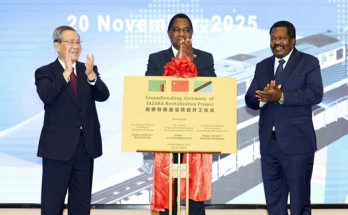 The Kenyan administration has plans to employ more automation services at the port of Mombasa with demands rising. Figures provided by the Kenya Ports of Authority (KPA) show that the facility managed 17.5 tonnes in a six month period in 2017, which represents a substantial hike from the 15.7 million tone figure recorded, the previous year.
The Kenyan administration has plans to employ more automation services at the port of Mombasa with demands rising. Figures provided by the Kenya Ports of Authority (KPA) show that the facility managed 17.5 tonnes in a six month period in 2017, which represents a substantial hike from the 15.7 million tone figure recorded, the previous year.
Cabinet Secretary, James Macharia, weighed in saying that the port is very likely to handle more cargo, especially with the demand from neighboring countries. This will make automation key to achieving goals for the port of Mombasa. “We are continuing to implement the Mombasa Port Community Charter devised in 2014. Most important is the automation of services under the Kenya National Single Window System as we anticipate more cargo coming especially directed to our neighbours,” he was quoted saying.
Catherine Mturi-Wairi reported a rise in export traffic to 2,182,232. This number has risen by 36,094 tonnes. Import traffic also recorded a growth of 12.1 percent to 14,803,838 tonnes from 13,209,720. The increase was driven by bulk commodities such as wheat, clinker, palm oil and refined petroleum products. “Handling such quantities needs an efficient and automated cargo handling system. We already have one in place but we will be working with partners like Trade Mark East Africa to improve on it,” said Ms Mturi-Wairi. The automation comes even as the Kenya Shippers Council CEO Gilbert Langat said cargo handling at the port is still slow due to poor systems, calling on KPA to improve it. “Cargo handling operations and poor use of systems are some of the challenges facing cargo movement at the port,” he said.



